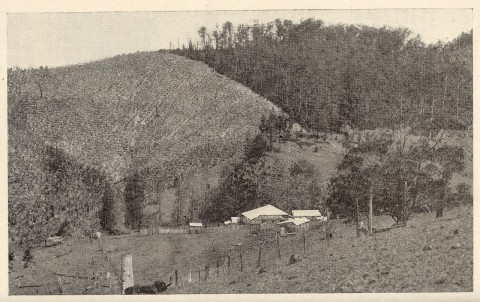Dayboro, on Terrors Creek a short distance north of where the creek joins the North Pine River, is 38 km north-west of central Brisbane. First named Hamilton (1875), then Terrors Creek (1892) after a noted stallion in the district, the village's name was changed to Dayboro in 1917 to avoid confusion with Torrens Creek. 'Dayboro' apparently derives from the name of a selector, William Day, who planted sugar and established a sugar mill in the area around 1869.
The sugar mill lasted until about 1883, with the cane fields being turned over to growing maize and pasture in the 1880s. Bricks from the mill were used for Dayboro's first store and hotel. Late in the 1890s an Orange lodge hall and a Catholic church were opened, and a Presbyterian church followed in 1900. The marketing of locally-grown fruit crops was assisted with the opening of a branch railway line from Enoggera to Dayboro in 1920, the branch closing in 1955. Dairying was also quite extensive. In 1924 Pugh's Queensland directory recorded Dayboro as having a cooperative butter factory, three sawmillers, a motor garage and several stores. The state primary school had opened in 1920.
After World War II a Lutheran church and a memorial showground (c1955) and recreation reserve were added to Dayboro. Dairying and other local primary industries have declined in recent decades. At around an hour from Brisbane's CBD, Dayboro has become an increasingly popular rural-residential locale for 'tree-changers' from the metropolitan area, with residential subdivisions taking over former pasturelands.
The town has a swimming pool, information centre, hotel, and a State primary school.
The Dayboro Day Festival (1991) is held annually on the last Sunday in May.
Dayboro's census populations have been:
| Census Date | Population |
|---|---|
| 1921 | 390 |
| 1954 | 454 |
| 1981 | 478 |
| 2001 | 838 |
| 2006 | 1383 |
| 2011 | 1692 |

